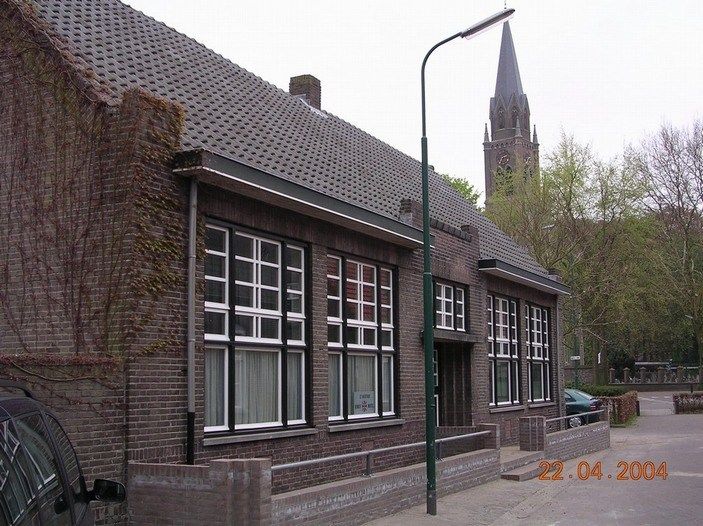Voormalige Komschool | Gemert
Contact
Gemert. The façade of the boys' school.
The beginnings of educating children began in Gemert with the sexton, attached to a parish of the Roman Catholic church, as was common in the Middle Ages. Schooling therefore began only after Gemert became its own parish, in 1437. In the 16th century, it can be said with certainty that the sexton was also the schoolmaster. Lessons were taught in the Diet school in the churchyard, i.e. in the Dutch language. There was also a Latin School and a French School (mainly for the children of merchants). A schoolmaster was appointed in 1742, separate from the sexton function. The small school in the churchyard became too small in the 19th century and was in poor condition. This bowl school was eventually built as a replacement.
Der Unterr…
Gemert. The façade of the boys' school.
The beginnings of educating children began in Gemert with the sexton, attached to a parish of the Roman Catholic church, as was common in the Middle Ages. Schooling therefore began only after Gemert became its own parish, in 1437. In the 16th century, it can be said with certainty that the sexton was also the schoolmaster. Lessons were taught in the Diet school in the churchyard, i.e. in the Dutch language. There was also a Latin School and a French School (mainly for the children of merchants). A schoolmaster was appointed in 1742, separate from the sexton function. The small school in the churchyard became too small in the 19th century and was in poor condition. This bowl school was eventually built as a replacement.
Der Unterricht, der durch den Katechismus begleitet wurde, beinhaltete häufig körperliche Züchtigungen. Es war jedoch verboten, Kinder auf den Kopf zu schlagen. In Gemert sind zwei Fälle bekannt, in denen der Lehrer ein Ohr fast vollständig abtrennte, woraufhin diese Lehrer entlassen wurden. Der Hauptzweck der Schule bestand darin, Disziplin und Werte zu vermitteln; Lesen und Schreiben waren zweitrangig. Daher war es wichtig, dass die Kinder aufrecht saßen und höflich waren. Im 19. Jahrhundert verschwanden die körperlichen Züchtigungen allmählich, und es entwickelte sich ein Unterrichtsplan, der dem heutigen ähnelte.
In 1912, two classrooms were added in addition to the two existing ones. All classes shared classrooms. Compulsory education was introduced around 1900, and although it was poorly enforced at first, the number of pupils rose to an average of 392 in 1938. Shifting the holidays to August so children could help with the harvest will certainly have contributed to this. The Kom School also became too small. A new school was built which was promptly confiscated by the army, and so was the Kom School. Classes were held in private homes or cafes during the war. After the war, the new school helped but by the 1950s, the Kom School was overcrowded again.In 1977, a new school was built. Although part of the old school has since been demolished to make way for the Bowl Road, the remainder is now used for computer education.
Sources:
P. van den Elsen, De Komschool: History of primary education in Gemert, 1978, Heemkundekring De Kommanderij, Gemert

